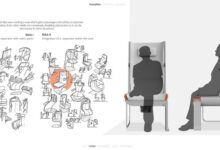How to Apply for Full-Ride Scholarships in Canada
How to Apply for Full-Ride Scholarships in Canada stands as a vital guide for students aiming to alleviate the financial burdens of higher education. These scholarships cover not only tuition fees but also living expenses, making them an attractive option for many aspiring scholars. In Canada, a variety of full-ride scholarships exist, each offering unique benefits and opportunities for students who meet the eligibility criteria.
Understanding how to navigate the application process, from researching opportunities to preparing compelling materials, is essential for success. With the right approach and dedication, you can position yourself as a strong candidate and take a significant step towards achieving your academic goals.
Overview of Full-Ride Scholarships in Canada

Source: opentextbc.ca
Full-ride scholarships in Canada are among the most coveted forms of financial aid available to students. These scholarships cover not only tuition fees but also other associated costs, including books, accommodation, and living expenses. This comprehensive financial support allows students to pursue their academic goals without the burden of debt, making higher education more accessible to a broader audience.Receiving a full-ride scholarship offers numerous benefits that can significantly enhance a student’s college experience.
Firstly, it alleviates the financial stress that often accompanies pursuing higher education, allowing recipients to focus on their studies and extracurricular activities. Additionally, full-ride scholarships often come with networking opportunities, mentorship programs, and access to exclusive academic resources. These scholarships can also bolster a student’s resume, providing valuable recognition that can open doors for future career opportunities.
Types of Full-Ride Scholarships Available in Canada
Various full-ride scholarships are offered in Canada, each catering to different student profiles and fields of study. Understanding the landscape of these scholarships can help prospective students identify suitable opportunities for their educational journey.The following categories highlight some of the primary types of full-ride scholarships available:
- Merit-Based Scholarships: These are awarded based on academic excellence, extracurricular achievements, or a combination of both. Institutions often offer these scholarships to attract top-performing students. For example, the University of Toronto offers the Lester B. Pearson International Scholarship, which recognizes outstanding international students who demonstrate exceptional academic merit and leadership potential.
- Need-Based Scholarships: Designed to support students who demonstrate financial need, these scholarships aim to ensure that financial barriers do not impede access to education. An example is the Canada Graduate Scholarships – Master’s Program, which provides funding for students based on their financial circumstances.
- Program-Specific Scholarships: Some scholarships are tied to specific fields of study or programs. For example, the Schulich Leader Scholarships are aimed at students pursuing engineering, technology, or science, supporting those who demonstrate exceptional leadership in these areas.
- Indigenous Scholarships: A range of scholarships are available specifically for Indigenous students in Canada, such as the Indspire Scholarships, which support First Nations, Inuit, and Métis students in pursuing post-secondary education.
- International Scholarships: Various institutions provide full-ride scholarships to attract international students. These scholarships often include additional support services to help students adapt to a new environment, like the University of Alberta’s International Entrance Scholarship, which provides significant funding for international students based on academic achievement.
In summary, the landscape of full-ride scholarships in Canada is diverse, catering to various student backgrounds, academic achievements, and financial needs. Exploring these options is crucial for students looking to navigate the financial aspect of their education effectively.
Eligibility Criteria for Full-Ride Scholarships
Full-ride scholarships are among the most sought-after financial aids available to students in Canada. They not only cover tuition but also often include stipends for living expenses, books, and other fees. To be considered for these prestigious awards, students must meet certain eligibility criteria that demonstrate both academic excellence and financial need.In general, the qualifications for full-ride scholarships vary, but they typically encompass a mix of academic achievements, leadership qualities, and financial assessments.
Institutions prioritize students who show exceptional promise and dedication to their studies, alongside a demonstrated need for financial support.
General Requirements for Full-Ride Scholarships
The requirements for full-ride scholarships typically include a combination of academic performance, extracurricular involvement, and personal circumstances. Here are the primary factors that institutions consider:
- Academic Excellence: Most full-ride scholarships require a minimum GPA, usually around 3.0 or higher on a 4.0 scale. Some competitive awards look for even higher standards, such as a GPA of 3.5 or above.
- Standardized Test Scores: High SAT or ACT scores can bolster an application. Institutions often have specific score thresholds that applicants must meet, particularly for prestigious scholarships.
- Community Involvement: Active participation in community service or extracurricular activities showcases leadership and commitment, which are highly valued by scholarship committees.
- Personal Statements and Recommendations: A compelling personal statement and strong letters of recommendation help applicants demonstrate their passion and suitability for the scholarship.
Financial Need Assessment Criteria
Financial need is a crucial component of eligibility for full-ride scholarships. Institutions employ various methods to assess an applicant’s financial situation, ensuring that the support goes to those who truly need it. The following factors are commonly taken into account:
- Family Income: Most institutions will require documentation of family income, often through tax returns or financial aid forms like the FAFSA or provincial equivalents.
- Assets and Savings: The assessment may include information on family assets, such as real estate, savings accounts, and investments, to determine overall financial capacity.
- Number of Dependents: Families with more dependents or siblings in college may receive higher consideration for financial aid due to their increased financial burden.
- Special Circumstances: Situations such as recent job loss, medical expenses, or other financial hardships can significantly impact the assessment. Institutions often allow applicants to provide additional information regarding these circumstances.
Understanding the eligibility criteria is essential for aspiring scholarship applicants, as it provides clarity on how to strategically position themselves for success in securing funding.
Researching Scholarship Opportunities
Finding full-ride scholarships in Canada requires diligent research and resourcefulness. With a variety of scholarships available, understanding where to look and how to leverage connections can significantly enhance your chances of success. This section explores valuable resources, the importance of networking, and effective ways to utilize social media for your scholarship search.
Resources for Finding Full-Ride Scholarships
To embark on your scholarship search, it is crucial to tap into various resources that provide comprehensive information about available scholarships. Here’s a list of reliable platforms and resources where you can find full-ride scholarship opportunities:
- Government Websites: Canadian government portals often list scholarships and grants available for students. Notable sites include the Government of Canada’s financial aid page .
- University Financial Aid Offices: Each Canadian university has a financial aid office that provides information on scholarships they offer, including full-ride options.
- Scholarship Databases: Websites like ScholarshipsCanada and Yconic aggregate scholarship opportunities across the country.
- Non-Profit Organizations: Various non-profit organizations and foundations offer scholarships; organizations such as the Canadian Hard of Hearing Association can be useful for targeted funding opportunities.
- Professional Associations: Many professional bodies provide scholarships to students pursuing degrees in their fields, such as the Association of Professional Engineers and Geoscientists of BC .
Importance of Networking and Connecting with Educational Institutions
Building connections with educational institutions and their representatives can significantly benefit your scholarship search. Networking allows you to access exclusive scholarship opportunities that may not be widely advertised. Engaging with faculty members and attending educational fairs can provide insightful information about funding options and specific scholarships offered by their respective colleges or universities.Establishing relationships with academic advisors can also lead to personalized guidance tailored to your field of study.
They may know about departmental scholarships and other funding opportunities that align with your academic goals.
Utilizing Social Media and Online Platforms for Scholarship Search
Social media has emerged as a powerful tool in the scholarship search process. By strategically utilizing platforms like LinkedIn, Twitter, and Facebook, you can uncover valuable scholarship opportunities and connect with individuals in your field of interest.On LinkedIn, follow educational institutions and scholarship organizations to stay updated on announcements and funding opportunities. Joining groups related to scholarships can provide insights and firsthand experiences from peers who may share leads on available scholarships.Twitter is another platform where many universities and organizations post scholarship announcements.
Following relevant hashtags such as #Scholarships and #FinAid can help you discover new opportunities. Facebook groups dedicated to scholarship searches can serve as a supportive community where members share their experiences, tips, and links to newly available scholarships.By leveraging these online platforms, you not only broaden your search but also engage with a community that is just as invested in securing scholarship funding as you are.
Preparing Application Materials

Source: opentextbc.ca
When it comes to applying for full-ride scholarships in Canada, presenting strong application materials is crucial. This includes crafting an engaging scholarship essay, obtaining powerful recommendation letters, and gathering essential documentation. Each component plays a significant role in showcasing your strengths and potential, helping scholarship committees see why you deserve their support.
Crafting a Compelling Scholarship Essay, How to Apply for Full-Ride Scholarships in Canada
A well-written scholarship essay can set you apart from other applicants. This is your chance to convey your passion, personality, and purpose. Below are some guidelines to help you write a compelling narrative:
- Understand the Prompt: Always carefully read the essay prompt and ensure your response aligns with what is being asked. Tailoring your essay to the specific scholarship requirements demonstrates your attention to detail.
- Tell Your Story: Use personal anecdotes to illustrate your journey, challenges, and achievements. Sharing your unique experiences can create a strong emotional connection with the reader.
- Be Authentic: Write in your own voice and be genuine. Scholarship committees appreciate honesty and originality, so avoid clichés and generic statements.
- Highlight Achievements: Focus on relevant accomplishments, both academic and extracurricular. Use specific examples to show how these experiences have shaped your goals and aspirations.
- Revise and Edit: After drafting your essay, take the time to revise and proofread. Consider seeking feedback from teachers or mentors to ensure clarity and coherence.
Significance of Recommendation Letters
Recommendation letters are a vital part of your scholarship application, as they provide an external perspective on your abilities and character. A strong recommendation can enhance your application significantly. To secure impactful letters, consider the following steps:
- Choose the Right Referees: Select individuals who know you well and can speak positively about your skills and experiences. Ideal referees include teachers, employers, or community leaders who can vouch for your character and achievements.
- Provide Context: When asking for a recommendation, provide your referees with information about the scholarship and your goals. This equips them to tailor their letters accordingly.
- Request in Advance: Ask for letters well in advance of the application deadline. This gives your referees enough time to prepare and write thoughtful recommendations.
- Express Gratitude: Whether or not you are awarded the scholarship, always thank your referees for their support. Acknowledging their effort can help maintain a positive relationship for future opportunities.
Essential Documents Required for Scholarship Applications
In addition to your essay and recommendation letters, several essential documents are typically required when applying for scholarships. Collecting and organizing these materials early can streamline your application process. Important documents often include:
- Transcripts: Most scholarships require your official academic transcripts to assess your academic performance.
- Proof of Citizenship: Providing documentation such as a passport or birth certificate may be necessary to confirm your eligibility as a Canadian citizen or resident.
- Financial Information: Some scholarships request financial documentation to evaluate your need for support. This could include family income statements or tax returns.
- Resume: A well-prepared resume highlighting your academic, extracurricular, and volunteer activities can provide a comprehensive view of your background and achievements.
- Personal Statement: In addition to the scholarship essay, some applications may require a brief personal statement outlining your career goals and reasons for applying.
Application Process Steps
Applying for full-ride scholarships can be a straightforward yet meticulous process. By understanding each step, you can ensure that you meet all requirements and timelines, thereby increasing your chances of success. Let’s break down the application process into organized steps that you can follow.
Step-by-Step Application Process
Each full-ride scholarship will have its unique application requirements, but there are common steps that applicants should follow. Familiarizing yourself with this process will help you stay organized and focused.
- Identify Scholarships: Start by gathering a list of full-ride scholarships that align with your field of study and interests. Use scholarship search engines and school resources to find opportunities.
- Check Eligibility: Before moving forward, thoroughly review the eligibility criteria for each scholarship. Ensure you meet all academic, residency, and other specific requirements.
- Prepare Application Materials: Prepare all necessary documents, including your academic transcripts, letters of recommendation, a resume, and a personal statement. Tailor each document to reflect the scholarship’s goals.
- Complete Application Forms: Fill out each scholarship application form carefully. Double-check for accuracy and completeness to avoid disqualification.
- Submit Applications: Pay attention to submission methods—whether online or by mail. Ensure that you submit your applications well before the deadlines to account for any unexpected issues.
- Follow Up: After submission, confirm receipt of your application with the scholarship committee. This can be done via email or through an online portal if available.
Timelines and Deadlines
Being aware of timelines is crucial for a successful application. Each scholarship will have its deadlines, often set on an annual basis.
“Early preparation is key; aim to start your applications at least six months before deadlines.”
Generally, the scholarship season can vary, but the following timeline is a good guideline:
- 6-12 Months Before Deadline: Begin researching scholarships and gathering application materials.
- 3-6 Months Before Deadline: Complete drafts of personal statements and secure letters of recommendation.
- 1 Month Before Deadline: Finalize applications and double-check all materials.
- 1-2 Weeks Before Deadline: Submit applications and follow up to ensure they were received.
Tracking Multiple Applications
When applying for multiple scholarships, keeping track of deadlines and requirements can be challenging. Here are effective strategies to stay organized:
“A well-maintained spreadsheet can be your best tool for managing multiple scholarship applications.”
Consider these tips:
- Create a Tracking Spreadsheet: Include columns for scholarship names, deadlines, eligibility criteria, and submission status.
- Set Reminders: Use calendar apps to set reminders for upcoming deadlines and follow-up dates.
- Organize Documents: Keep a dedicated folder on your computer for each scholarship’s application materials to streamline access.
- Review Progress Regularly: Set aside time weekly to review your applications and update your tracking spreadsheet.
Interview Preparation for Scholarship Candidates
Preparing for scholarship interviews can be just as important as crafting your application. This is your chance to present yourself directly to the scholarship committee and make a lasting impression. To maximize your chances of success, it’s crucial to approach the interview with confidence and preparation.Effective interview preparation involves several techniques that can help you stand out. Familiarizing yourself with the scholarship’s mission and values allows you to align your responses with their expectations.
Practicing common interview questions can also help you refine your answers and improve your delivery. It’s essential to communicate not just your qualifications but also your enthusiasm and commitment to your chosen field of study.
Techniques for Interview Preparation
Several techniques can enhance your readiness for scholarship interviews. These strategies help you approach the interview with poise and clarity:
- Research the Scholarship and Organization: Understand the core values and objectives of the scholarship. This knowledge allows you to tailor your responses to reflect shared values.
- Practice Mock Interviews: Conduct mock interviews with friends or mentors. This practice helps you get comfortable with speaking about your experiences and aspirations.
- Dress Appropriately: Choose professional attire that aligns with the scholarship’s formality. Your appearance can influence first impressions.
- Prepare Your Own Questions: Having questions ready shows your genuine interest in the scholarship and the organization.
Common Interview Questions and Effective Responses
Scholarship interviews often include specific questions designed to assess your motivations, experiences, and future goals. Anticipating these questions allows you to prepare thoughtful responses:
- Tell us about yourself: Keep your response concise and relevant, highlighting your academic achievements, extracurricular activities, and career aspirations.
- Why do you deserve this scholarship? Focus on your unique qualifications, commitment to your studies, and how the scholarship will impact your future.
- What are your long-term goals? Clearly Artikel your aspirations and explain how the scholarship will help you achieve them.
- Can you discuss a challenge you have overcome? Share a specific example, emphasizing the skills you developed and how it shaped you.
Do’s and Don’ts During Scholarship Interviews
Understanding the etiquette and best practices for scholarship interviews is vital. Adhering to these do’s and don’ts can significantly impact your performance during the interview.
- Do:
- Listen carefully to questions before answering.
- Maintain eye contact to show engagement.
- Be honest and authentic in your responses.
- Follow up with a thank-you note after the interview.
- Don’t:
- Don’t interrupt the interviewers while they are speaking.
- Don’t speak negatively about past experiences or institutions.
- Don’t provide overly vague answers; be specific.
- Don’t forget to prepare for potential follow-up questions.
“Preparation breeds confidence. The better you prepare, the more confident you will feel during your interview.”
Common Mistakes to Avoid: How To Apply For Full-Ride Scholarships In Canada

Source: freepngimg.com
Applying for full-ride scholarships can be a competitive and intricate process. Understanding common pitfalls can significantly enhance your chances of success. Many applicants make avoidable mistakes that can hinder their chances of securing funding. By recognizing these errors and learning how to correct them, you can present a polished and compelling application.One of the most critical aspects of a successful scholarship application is ensuring all materials are complete and accurate.
Incomplete applications may be disqualified outright, and errors can raise doubts about your attention to detail. Additionally, following the instructions meticulously is essential, as failure to do so can lead to misunderstandings about your qualifications or intent.
Typical Errors in Applications
A variety of mistakes can occur during the application process, and being aware of these can save time and effort. Here are some common errors that applicants often make:
- Missing Deadlines: Many candidates fail to submit applications on time, which results in automatic disqualification.
- Incomplete Application Forms: Omitting required sections or information can lead to an application being considered incomplete.
- Poorly Written Essays: Submitting essays with grammatical errors or unclear arguments diminishes the overall quality of the application.
- Neglecting Specific Requirements: Some scholarships ask for specific documents, such as recommendation letters or transcripts, and failure to provide these can hurt your chances.
- Not Tailoring Applications: Sending generic applications without customizing them to fit the scholarship’s criteria can reduce the likelihood of success.
Ensuring that all application materials are complete and accurate can make a significant difference. Always double-check your application by reviewing the required documents and confirming that you have included everything necessary.
Importance of Following Instructions
Adhering strictly to the application instructions is crucial for your success. Each scholarship may have its specific guidelines, and failing to follow these can lead to disqualification. Reading the instructions carefully ensures that you understand what is expected of you. Here are some key points to remember:
- Read Thoroughly: Taking the time to read all provided materials helps you grasp the full scope of requirements.
- Check Formatting Guidelines: Pay attention to specified formats, such as font size, margins, and length of essays.
- Provide Accurate Information: Ensure that all personal details, such as names and contact information, are correct and up-to-date.
- Follow Submission Guidelines: Understand how to submit the application, whether online or via mail, and adhere to the specified procedure.
“Attention to detail is not just about making sure your application looks good; it’s about demonstrating your commitment and seriousness about obtaining the scholarship.”
Post-Application Actions
After submitting your scholarship applications, the waiting period can often feel daunting. However, there are several proactive steps you can take to ensure you remain engaged and prepared for any outcomes. This phase is crucial, as it not only keeps you motivated but also opens doors to further opportunities.Staying engaged with scholarship organizations during the waiting period is beneficial. It demonstrates your interest in the scholarship and can help you remain informed about any updates or additional opportunities.
Here’s how you can maintain that engagement effectively:
Steps to Stay Engaged
It’s important to follow specific actions after submitting your applications. These will help you stay connected and informed while waiting for responses.
- Send a Thank You Note: A simple thank you email to the scholarship committee acknowledging their efforts in reviewing your application can make a positive impression.
- Follow Up: If you have not heard back by the expected date, consider sending a polite inquiry about the status of your application.
- Stay Informed: Regularly check the scholarship organization’s website or social media for any announcements or updates regarding the selection process.
- Engage with Alumni: If possible, connect with previous scholarship recipients. They can provide insights on their experience and any tips they may have for you.
Considering alternative funding options is also crucial in the event that you do not receive a scholarship. This proactive approach ensures that you have a plan in place to fund your education. Here are some strategies to consider:
Alternative Funding Options
Exploring other financial avenues is essential for a comprehensive funding strategy. If you find yourself without a scholarship, consider these options:
- Student Loans: Look into government and private student loans that can help cover tuition costs. Research the terms and interest rates to find the best option for you.
- Part-time Work: Securing a part-time job can provide you with additional income to support your studies. Many institutions offer on-campus job opportunities that are flexible for students.
- Grants and Bursaries: Investigate other financial aid options such as grants and bursaries that do not require repayment. These can provide valuable financial support.
- Crowdfunding: Consider using crowdfunding platforms to raise money for your education. Share your story with friends and family to gather support.
Being prepared for all possibilities not only alleviates stress but also places you in a stronger position to pursue your educational goals.
Final Review
In summary, applying for full-ride scholarships in Canada can be a transformative experience that opens doors to incredible educational opportunities. By adhering to the guidelines presented, conducting thorough research, and avoiding common pitfalls, you can enhance your chances of securing these valuable awards. Remember, persistence and preparation are key, so stay engaged and proactive throughout your scholarship journey.
Helpful Answers
What are full-ride scholarships?
Full-ride scholarships cover tuition, fees, and often living expenses, providing comprehensive financial support for students.
Who is eligible for full-ride scholarships?
Eligibility varies by scholarship but generally includes academic achievements, financial need, and sometimes extracurricular involvement.
How can I find full-ride scholarships in Canada?
You can find scholarships through university websites, scholarship databases, and networking with educational institutions.
What materials do I need for my application?
Common materials include a scholarship essay, recommendation letters, and transcripts, along with any specific documents required by the scholarship.
What should I do if I don’t receive a scholarship?
Consider alternative funding options, such as part-time work, other scholarships, or financial aid programs to support your education.









